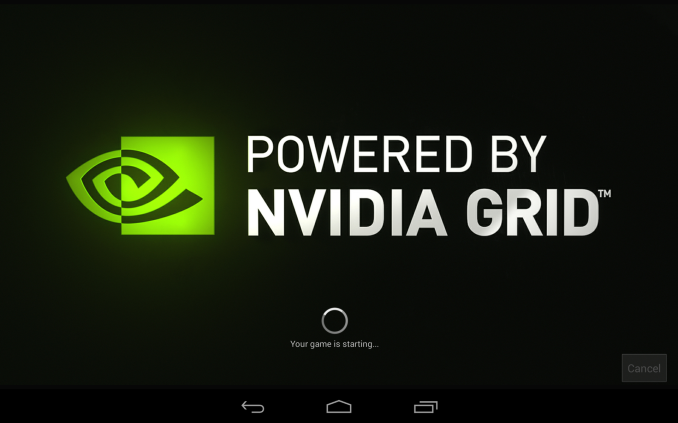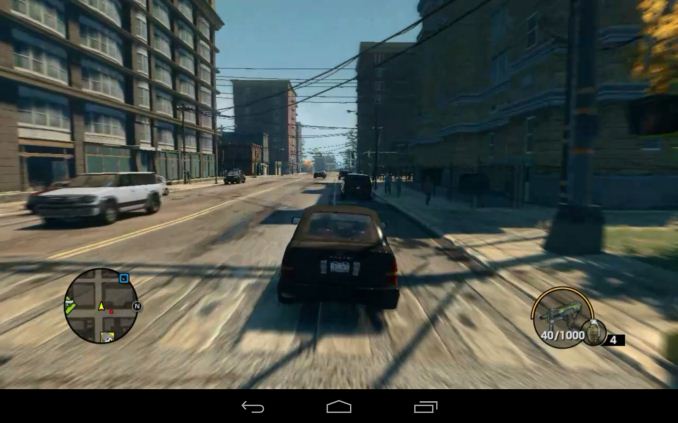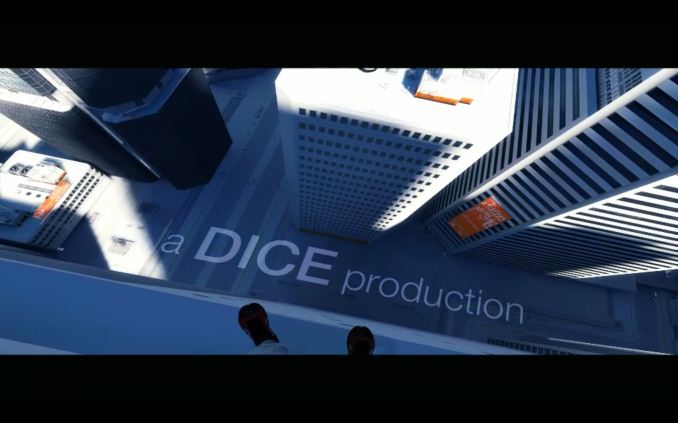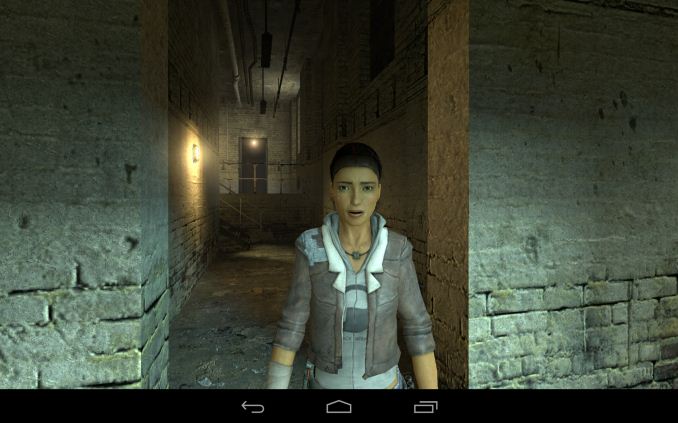The NVIDIA SHIELD Tablet Review
by Joshua Ho on July 29, 2014 9:00 AM ESTGameStream and GRID
The final software features that Shield Tablet brings to the table are GameStream and GRID. These are effectively methods of turning the tablet into a thin client, as all of the rendering/computation is done on a computer either in the LAN or on a server in San Jose. From a technical perspective, both work great as long as the connection has high bandwidth and low latency. For GRID, I managed to get a great user experience on a symmetrical 10 Mbps connection and around 10ms latency to the server. Games like Saints Row 3 played as if running on a console when the device is actually streaming from NVIDIA servers. From the user’s perspective, it’s a matter of going into the app drawer, opening GRID, and selecting a game. It’s simple and given sufficient server coverage I could easily see a Netflix-style usage model taking off quite successfully.
Although I didn’t spend as much time with GameStream, I didn’t detect any input lag and for the most part it’s just as simple. As long as a GameStream-enabled PC is on the same network, accessing GameStream compatible games is just a matter of going to the Shield Hub application, entering a four digit code on the PC to pair it with the tablet, and selecting a game. GameStream also works remotely, but the same caveats that come with GRID apply to GameStream on both the server and client end. Of course, the games that will run on GameStream have to be carefully selected. While it’s fully possible to play a twitch shooter like Call of Duty through GameStream, trying to use a controller in multiplayer is simply a massive disadvantage against people that are competent with a mouse and keyboard. I've included a screenshot of Mirror's Edge that I took while testing GameStream.
Gaming Ecosystem
Ultimately, I’m a bit conflicted on whether GameStream and GRID are really designed to stand on their own though. GameStream only works while you’re at home, and GRID is highly dependent upon low latency and also needs around 10 Mbps download and 5 Mbps upload for an ideal experience. Due to the latency requirement and the fact that the only GRID server bank is in San Jose, the very low latencies that GRID is best suited for are generally only achievable in California and parts of other nearby states. They’re definitely great in the situations that they work, but ultimately the native game library has to stand alone. To this end, the tablet is in a far better situation than the original Shield. The number of games that provide a quality gaming experience is now leaps and bounds better than what we saw with the launch of the Shield Portable. Trine 2 is included out of the box, and while I didn’t get a chance to try co-op mode it’s a compelling experience that once needed GameStream or GRID to be played on Shield. Along the same lines, the Grand Theft Auto series, Half Life 2, and Portal all play surprisingly well.
Fundamentally though, I don’t think single player games alone will sell Shield as a gaming platform. A single player game can only have a certain amount of replay value. Something like Half Life 2 might have 12 hours of gameplay at best. In comparison, multiplayer has massive amounts of replay value because even the same map can play out differently depending upon the people that play in the round. It’s that factor that makes it possible for people to spend 1200 hours playing a game like Battlefield 2. Unfortunately, for the most part the Shield tablet has a game library that seems to be skewed towards single player games. Fortunately, NVIDIA seems to understand this. While I haven’t been able to play War Thunder on Shield tablet, the promise of compelling multiplayer games on this device would be a strong enough reason to excuse potential shortcomings in other areas. Although it's good that an immersive multiplayer title is coming to Shield tablet, the key point of emphasis is that people playing a Shield device can play with those on console or PC as well. Until NVIDIA hits critical mass for Shield device adoption, multiplayer titles that only allow people on Shield to play with others on Shield will struggle because people won't play multiplayer unless there are other people to play with.















174 Comments
View All Comments
NZtechfreak - Monday, August 18, 2014 - link
Got my Controller today, thought some people might like to know it works fine with other Android devices via USB OTG. Makes it that bit more worthwhile. Couldn't get it to work with my PC though. Hopefully Nvidia will make a small receiver dongle with micro USB OTG and full sized PC connectors.mrreload - Tuesday, August 26, 2014 - link
"While I academically understand why people like tablets, I’ve never really found a use for them."Why in the world would AnandTech pick you for a tablet review? That's like reviewing a car but you don't own a car. Utter rubbish!
SnakeAndShotie - Tuesday, September 23, 2014 - link
I'm a pretty big fan of my NVidia shield - I know it doesn't have the best battery life ever but is totally manageable.If you want to see Portal on the tablet, check out this video: http://tinyurl.com/mxj7osm
While there are some frame rate issues, it runs well for the most part!
Fat Cat Ritz - Thursday, December 11, 2014 - link
I'm sure if you do not like the color or brightness of the screen on the tablet you can thankfully plug it into a TV via mini HDMI right? That should possibly improve the picture. I haven't gotten mine yet.